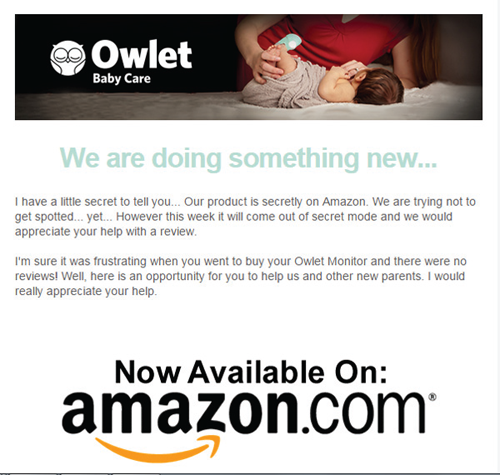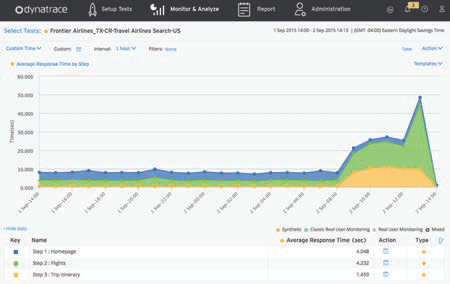Disruptive Business Operations

Whether it's within an entire industry, a specific tactic or at a workplace, disrupting the status quo can be quite lucrative.
The example most often/recently cited is that of ride-sharing company Uber. By offering a far-better experience than most taxi companies (see sidebar), Uber has nearly doubled drivers' salaries in some cities (the company reports its drivers make $30.35/hour on average in New York compared to $15.17/hour for drivers in the same city). Even more impressive, the company is now valued at more than the entire industry it has impacted and disrupted.
In 2014, Uber closed a funding round that valued the company at $18.2 billion (and many estimate that number to be two times that today), which is higher than the taxi industry's total revenue ($16 billion according to 2015 data from IBISWorld). For comparison, GoDaddy was bought in 2011 for a reported $2.25 billion while messaging service Whatsapp was acquired by Facebook last year for roughly $22 billion.
DEFINING DISRUPTION
Clearly there are billions of dollars up for grabs for "those changing the way products or services are delivered, when compared to existing competitors" - the definition of disruption according to Flaunt Digital Co-Founder and CEO Lee Fuller whose fully remote agency is disruptive in its own right (see sidebar).
Disruption isn't a guarantee for success of course. How a business operates every day levels the playing field for even the most ambitious startup, yet the foundations of success are often the same for every enterprise. Any company operating today needs to have a reliable and optimized user experience, as well as processes in place to acquire and support customers (and talent for that matter). If a company fails to do so, they risk becoming like a taxi driver (who demands to be paid in cash) in an Uber world (where mobile payment is frictionless).
There are enterprising individuals and groups of people out there right now who have a genuine desire to make things better (and make money). What they don't have, according to Gartner's Don Scheibenreif, are legacy infrastructures and fear to hold them back. They are speeding up digital business, and enterprises (both old and new) will need to find ways to operate in far more effective, modern and data-driven ways to keep pace.
NO GUTS, NO GLORY
Without the need to be accountable to shareholders and other stakeholders, many of today's newest companies are launching before their products or services are "perfect." According to Gartner's Scheibenreif, they are getting feedback and retooling as they go, which may challenge and disrupt many businesses that tend to hold their cards closer to their chest - only revealing their work to the public when it's 100 percent ready.
For early adopters, it was clear Owlet Baby Monitor took the "perfect-as-we-go" approach to launching its product - a "smart sock," which enables parents of infants to monitor their baby's heart and oxygen levels from an app, as well as be alerted when those vital signs go too high or too low. While the product itself is disruptive (for its uniqueness), Owlet's communication efforts and transparency as a brand challenges the status quo, helped shape the product being sold today and likely contributed to the $7 million it received in funding in August of this year.
To begin with, however, Owlet was nowhere near ready to meet the demand for its product, which could have been detrimental to the user experience had the company not mitigated the ordering friction with updates on production, wait lists, pre-orders and then, finally, shipments. The main reason so many were willing to wait, however, is that Owlet truly provided a unique offering that couldn't be purchased anywhere else. Its closest competitor, Sproutling (a wearable band for infants that senses heart rate, skin temperature, motion and position), has been sold out since early this year. Unlike Owlet, Sproutling likely only added to prospective customers' frustration because it retargeted individuals pretty aggressively around the 'Net, despite (1) the product not being available and (2) the user already completing the call to action (e.g. "join wait list").
While both companies struggled to meet demand, the Owlet difference was in its operations, such as more updates and quicker fulfillment for those waitlisted. Sometimes disruption is as simple as transparency.
360-Degree Analysis
Companies can also learn from Owlet's willingness to gather feedback and retool. Aside from a few surveys distributed via email (some of which only included a single question - increasing the chances of completion), Owlet had internal quality assurance processes as well (re-sending smart socks voluntarily because the previous ones didn't meet internal standards).
Owlet's analysis and optimization efforts can also be seen in its strategy toward Amazon reviews. While the product is only "secretly" on Amazon at time of print (see image), Owlet has long asked customers - in a hypothetical manner - what their Amazon review would say if they were to review Owlet on the marketplace. By vetting the reviews beforehand, Owlet then sent out an email to those with positive "pre-reviews" (at least presumably). As of print, Owlet Baby Monitor boasts 4.9 out of five stars on Amazon, with many parents scoring the product a five even with product "quirks."

The genius behind this approach is that Owlet likely knew way in advance what the parents were going to say because they asked them, and parents were willing to tell them, likely because (1) the product is very personal to their family and (2) as early adopters, they were involved in the retooling of the product through feedback and updates - essentially becoming advocates and testers.
This perfect-as-we-go type mentality can be, as was in the case of Owlet, bolstered with supporting technologies. Owlet, for instance, is wise to use a solution like Zendesk for its customer support, because the baby monitor is unlike any before it so people likely have more questions than they would with a traditional product. The product also, as previously mentioned, has some quirks (like false alarms and hyper-sensitivity), which requires extra support.
By leveraging cloud-based customer service platform, Zendesk, Owlet streamlines its customer care via ticketing, self-service options (e.g. a help desk, trending questions, etc.) and other customer support features. Additionally, Owlet deploys Zopim - a Zendesk company - for live chat on its website to answer any questions visitors have, which (if all goes well) will move them to purchase.
On today's Web, disruptive companies must be backed by sound customer service solutions. Otherwise, a company risks losing an online audience to bad reviews, social complaints and more.
Before customer service options should even be a blip on the digital radar, however, companies will want to consider a Web content management system (CMS) that will support the perfect-as-you-go approach. Organizations that platform with Sitecore, for example, can collect feedback and ideas from multiple channels, compile it and apply it to a profile of a new or improved product or service. This, according to Beth Torrie, VP of strategic engagement at Sitecore, happens in a few ways.
"When a new product or service is launched, organizations can collect feedback through proactive and reactive questions, polls and conversations," said Torrie. "Within each user's profile, Sitecore can capture and deliver personalized experiences to communicate when and what improvements will be made."
One of Sitecore's strongest abilities is being able to connect silos - whether that's teams, channels or new devices. Torrie believes that the modular way that Sitecore's platform is built makes it so when the next disruptive Internet of Things (IoT) device comes out, Sitecore will be able to connect to it, collect the data and apply it into the customer/brand journey.
This is an important capability of a CMS even for online brands not operating in the IoT realm currently.
As Scheibenreif of Gartner pointed out at the company's Customer Summit in San Diego, it's only a matter of time before everything that can be connected to the Internet will be connected in order for products to actively participate in a person's life. Even so, the website is still at the center of building a customer base (even for IoT devices), as it is often the destination where people are sent to research products and services - making Web-based customer acquisition the livelihood of any business (disruptive or not).
NEW-AGE ACQUISITION & RETENTION
Despite how a company is launched or maintained, every business needs customers - whatever they look like for that particular organization (readers, home owners, software purchasers, clothes shoppers, etc.). While acquisition and retention have always been about knowing who potential or current customers are, and how to best find them and then support them, emerging solutions have made easier work out of doing so.
InsideSales.com, for instance, gamifies the sales experience to see how a sales person is performing against other reps, as well as provides scores to help individuals prioritize their leads (based on how likely they are to purchase and to be contacted at all). It's a sales acceleration platform that sits in between marketing automation vendors and customer relationship management solutions. While it's not the only company in this niche, InsideSales.com's is quite sophisticated in its ability to predict (and self-learn) who its sales team should contact, when they should contact them and how they should contact them. The company does so, according to Chief Marketing Officer Mick Hollison, through its data structure of 80 billion sales interactions and a predictive analytics engine that sits atop that big data to analyze the information and prioritize leads.
A lot of what InsideSales.com offers takes the guesswork out of sales interactions and it's proving quite disruptive. For instance, one of its features guides individual sales reps to the right time to send an email. In other words, when the prospect is most likely to open and engage with that message. The sales rep will also receive real-time alerts for email opens, link clicks, attachment downloads, email forwards and website visits, which can help them act on these buying signals.
By empowering a sales team with actionable data, InsideSales.com is making the experience of both selling and purchasing business-to-business (B2B) products simpler. InsideSales.com doesn't stop there, however. The company offers sales hiring software that predicts the success of an individual before the company hires him or her (based on a perceived ability to meet quotas).
Disruptive acquisition tactics can only get a company so far though. Customers will leave in spades at the slightest hint of unreliable support (read "How to Predict Churn").
Everything from product updates to billing need to be executed flawlessly - this is especially true in B2B sales where the stakes are higher than a routine digital shopping trip. Big Blue Digital - an Australia-based agency - found out the hard way about how unproductive and inaccurate manual time tracking could be. As a result, according to the company's CEO, Brendon O'Sullivan, Big Blue Digital billed clients late who then paid late, which resulted in its cash flow being constantly behind - a tough position for a company to be in, especially one looking to grow.
"Many other agencies experience the same pain point where their employees often keep their timesheets at the bottom of the priority list," said O'Sullivan. "Further, even when employees filled out their timesheets, they weren't reliable. It's impossible to accurately track how much time you spend answering client emails or discussing projects with your cubemate. When you don't include these times in your timesheet, you're likely to bill them a smaller amount and are essentially doing work for free."
Big Blue Digital turned to AffinityLive to disrupt its operations by mitigating those vital issues. By automating its systems, Big Blue Digital started to have accurate timesheets, which enabled it to shorten the period between project completion and receiving payment. By implementing AffinityLive's system, Big Blue Digital was able to get paid three times faster and increase revenue by almost 50 percent by cutting back on leaked time overhead. The company's goal is to increase productivity by 75 percent - and it's on its way.
"No one creates their own business because they want to spend their time doing administrative tasks like time tracking and billing," said O'Sullivan. "It's necessary for profitability, and having a tool like AffinityLive take care of those mundane chores frees up my time and my team's time to do what we love."
While accurate billing is certainly a requirement for both the biller and the billed, client/customer retention goes far beyond transactions. In order to stay competitive, a company's products/services must not only offer a better experience and solve pain points, but also provide intrigue - and pure disruption is one way to do so if all systems are running on all cylinders.
DISRUPTABILITY VIA PERFORMANCE
With countless options to choose from, even the most subtle benefit (price, baggage, loyalty perks, food options, destinations, times, etc.) can move a traveler from one airline to another. High levels of competition in the industry puts a company at risk if it fails to meet customer expectations, which is the situation Frontier Airlines has found itself in as of late.
According to a Sept. 2015 article from the Denver Business Journal, Frontier Airlines sits in second-to-last place among major carriers for complaints - only exceeded by discount carrier Spirit Airlines.
Likely an attempt to fill its seats and save face, Frontier launched a "Fly for a Buck" sale last month, with very mixed results. This is because a company can be as disruptive as it wants to be - through products, acquisition, retention and everyday operations - but solid performance is how the initiative will ultimately be judged.
In the case of Frontier Airlines' disruptive $1 sale, it had to redirect potential customers (who were likely eager and ready to take advantage of the lucrative sale) to a book.flyfrontier.com/sorry landing page (see image) as the result of not being able to accommodate the influx of traffic caused by its rather disruptive promotion - very frustrating for the end-user, of course.

Asked to monitor the outage for Website Magazine, Dynatrace started seeing an issue with Frontier's website (a slow down on Flight Search and Details pages) starting the morning of the one-day sale (Sept. 2) around 8 a.m. EST and lasting for almost six hours (see image).

The Dynatrace Root Cause Analyzer looked through hundreds of page requests and thousands of objects to highlight where the major issues were. Specifically it found that requests to back-end services were responding slowly. The report showed that requests were taking a long time for the Frontier servers to respond and appeared to be entirely server side. This is the type of issue that Dynatrace Application Monitoring helps enterprises with and, as a result, mitigates operational risk, improves business continuity and protects online revenue.
"In this situation, companies like Frontier should focus on enhancing internal alignment between their business units and technology partners," said David Jones, an APM technical evangelist with Dynatrace. "In cases like this it is not uncommon for a business unit to not communicate with other business units about operational changes, promotions, etc."
As mentioned, even the most disruptive business idea needs to be rooted in flawless performance, as website visitors expect a site to load in 3 seconds or less or about half of them will leave the site. Despite this well-accepted benchmark, Radware's "State of the Union for E-Commerce Page Speed & Web Performance" report (Summer 2015) indicates just 12 percent of the top 100 e-commerce sites (as ranked by Alexa.com) render featured content within the optimal 3-second window.
How do slow page load times affect conversion? While there is certainly plenty of benchmark data available, the Impact product from Cedexis correlates performance problems with key performance indicators (KPIs) such as conversions.
Released in mid-2015, Cedexis's Impact offering allows IT professionals to verify to their marketing colleagues that improving page load time will improve KPIs (e.g. increase pages viewed, decrease bounce rates and improve conversion rates across conversion types). If a company knows, for example, they invested in a shopping cart solution or put time and resources into simplifying the product information pages, now they can determine to what effect (based on what conversions they've identified, like whitepaper downloads, a purchase, an email sign-up, etc.).
The solution essentially enables the business to gauge whether changes are resulting in more conversions, as well as prioritize where to invest in the future. Knowing that a technology investment is being directly tied into business results, according to Cedexis VP of Marketing and Business Development Rob Malnati, means companies can look at each section of the website independently. If they are deploying a content delivery network (CDN) for the first time, for example, it allows them to see if that investment has resulted in better business results.
Rarely has the Web industry seen such disruption in the form of evidence to support business purchases that promise to improve performance, like a new shopping cart, a CDN, a CMS or other critical technologies.
READY & WILLING?
From ride-sharing and baby monitoring to lead scoring and billing, there are companies making processes and products better - disrupting how people do and expect to do business online and off. Despite changes, the foundations of Web success will remain the same. Even those ready, willing and worthy of disruption will need to provide a reliable and optimized user experience, while acquiring and retaining customers in modern and efficient ways.

Subscribe to Our Newsletter!
Latest in Marketing








